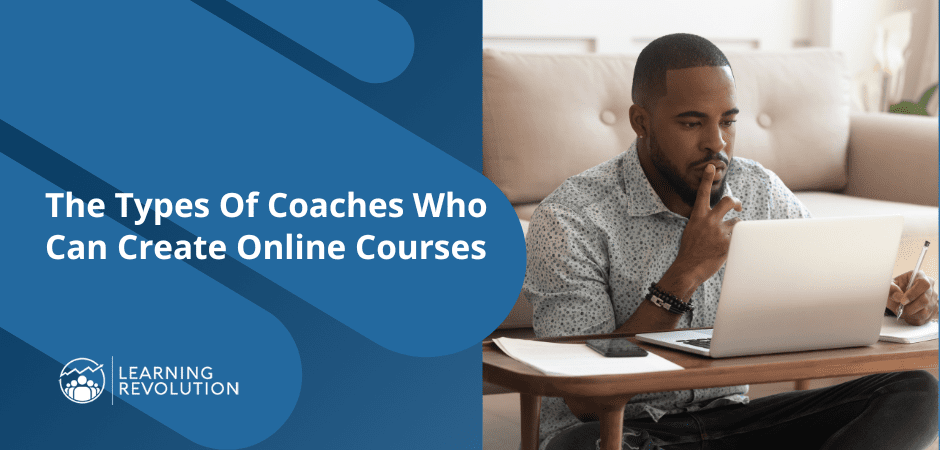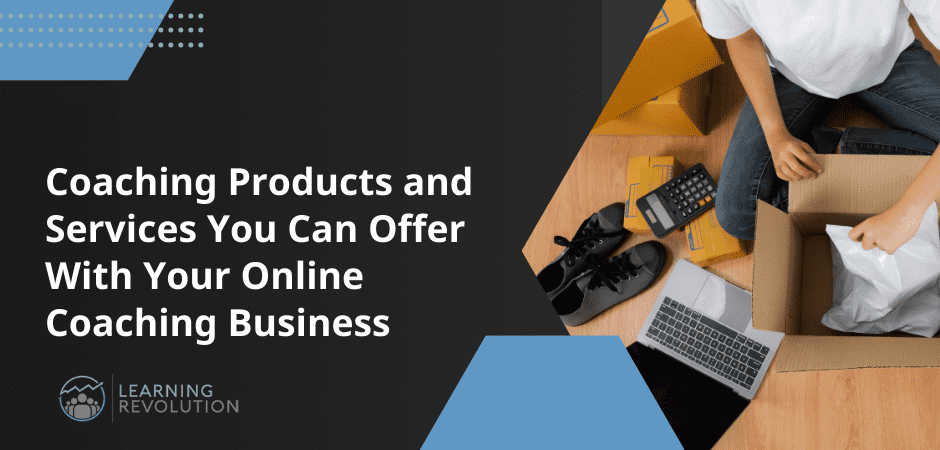

Many online coaches focus on providing a single service. However, an online coaching business allows you to offer a variety of products and services tailored to your expertise and target audience.
Coaching products include everything that doesn’t require you to exchange time for money. They allow you to impact a broader audience, and if you offer multiple products at different value propositions and price ranges, you’ll be able to introduce people to your program gradually, which increases the chances of gaining new clients.
Read the rest of this guide where we take a look at some of the most lucrative coaching products and services you can offer with your online coaching business.
Benefits of Offering Additional Coaching Products and Services
If you only offer one service in your coaching business, you probably feel that for you to provide great value to your clients, you have to be present 24/7.
However, spending more time with your clients doesn’t necessarily increase your value to them. Besides, this path often leads to burnout making it difficult to continue long-term.
A way to combat that is to introduce various products and services to complement your coaching. You’ll not only be able to earn more while working less, but you’ll also add immense value to your coaching package.
Here are some additional benefits you’ll enjoy:
- Diversify your offerings: Offer more value to your clients by providing a diverse range of products and services for them to choose from.
- Scale your coaching business: Expand your client base without having to work around the clock.
- Have a bigger impact: Offering multiple products and services allows you to reduce marketing costs while reaching a wider audience.
- Achieve more freedom: Unlike the one-to-one coaching model where you’d have to increase your hours to increase your revenue, coaching products allow you to make more money without increasing your workload.
- Create passive income: You only have to create digital products once, and you can sell them again and again.
- Leverage different learning preferences: Your clients have different needs and learn in different ways. By having multiple products and services to offer, you allow each individual to absorb information in the way that works best for them during your coaching process.
- Develop thought leadership: Multiple products allow you to integrate thought leadership by making it easier for you to share specific advice and unique takes that differentiate you from other coaches in your niche.
If you’d love to help your clients more but are already feeling overwhelmed running your coaching business, offering other resources besides live coaching is a great way for you to make a difference without sacrificing your work-life balance.
With that said, here are some coaching products and services you can offer with an online coaching business:
1. One-on-One Coaching Sessions
As an online coach, your main service involves online coaching sessions with your clients. These types of coaching packages are the cornerstone of personalized coaching and involve direct interaction between the coach and the client, allowing for a deep understanding of individual needs and goals.
One-on-one coaching is particularly effective for clients seeking a highly individualized and focused approach to personal or professional development. It’s a great way to help clients achieve their goals with dedicated expert support.
This format enables you, as the coach, to provide tailored guidance, constructive feedback, and a customized action plan. Having a structure with set packages takes the guesswork out of the process for both parties.
When offering one-on-one coaching sessions, make sure to:
- Have an intake consultation and be clear about what clients can expect.
- Ensure you properly onboard new clients using the right system and platform.
- Touch base regularly outside of each coaching session via email marketing.
- Adjust approaches as needed based on client progress and evolving needs.
Sessions are typically 30-60 minutes, and packages can vary based on the number of sessions, such as 4, 8, or 12-week programs.
Depending on your preferences and the client’s location, sessions can be conducted through various mediums such as Zoom, Skype, phone calls, or in-person meetings for a more personal touch.
You can use a coaching package calculator like this one to determine exactly how much you should charge for your coaching products and services to help you get more sales.
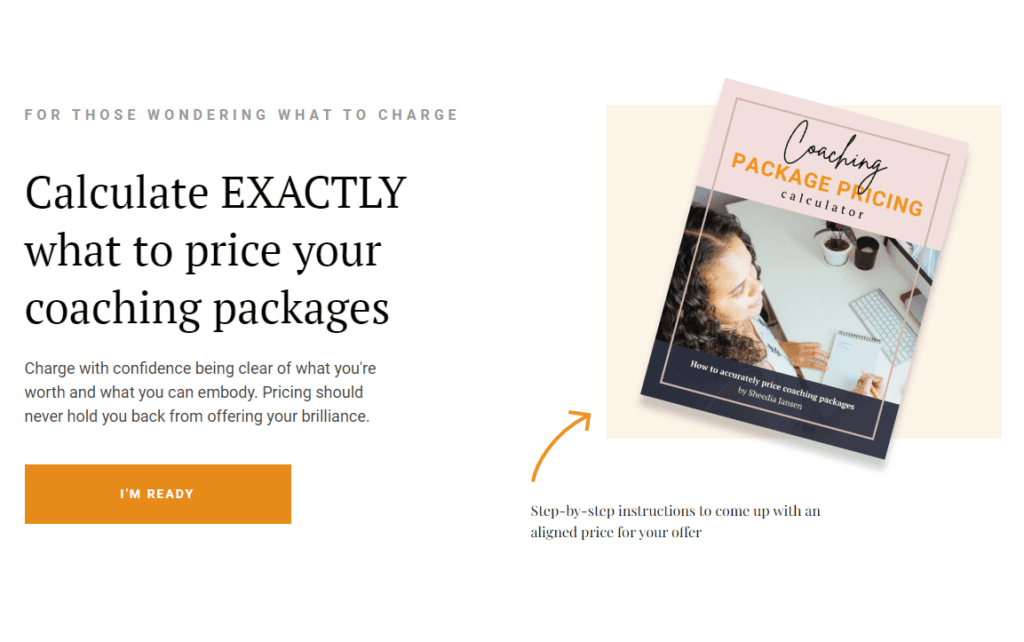

Learn more about the top online coaching platforms to power your coaching business.
2. Group Coaching Programs
One-on-one coaching sessions are tailored to the individual needs of clients. However, if you have several clients who share similar goals or challenges, you can coach them together as a small group (typically 4-8 people).
This works very well for different types of coaches, including the following:
- Online fitness coach
- Online life coach
- Online weight loss coach
- Online business coach
- Online nutrition coach
Transitioning from one-on-one coaching sessions to group coaching programs is one of the easiest ways to scale your coaching business. It allows you to help more clients at a time and increase your return on investment (ROI).
Host a small group program for your current clients over a set number of weeks focused on a specific goal.
Structure sessions to incorporate teaching modules from your coaching, and include breakout discussions, Q&A, and community sharing while progressing participants toward a clear outcome.
You can host online or in person. This type of program allows for peer support and lets participants get expert coaching in an intimate group setting. They can interact with peers working towards similar goals, thereby offering camaraderie and accountability.
Another huge advantage of group coaching is that it’s often more cost-effective for clients and provides an affordable supportive environment where they can celebrate successes and tackle obstacles together.
3. Online Courses
Group coaching programs are a great way to scale your coaching business. However, you’re still trading time for money. If your goal is to free up your time, you need to implement coaching models that help you build passive income.
Passive income is the key to being able to earn more without having to work nonstop. If you are wondering how to create passive income as an online coach, online courses are a great place to start.
Online courses are a scalable way to share your expertise with a broader audience. As a coach, you can develop and sell pre-recorded online courses that cover specific topics related to your expertise.
You can offer different types of courses to cater to different learners. Your course can be self-paced, or you can run cohort-based courses that start on set dates. These pre-recorded courses can cover a range of topics and be made available for purchase or through a subscription model.
Courses typically include video lectures, downloadable resources, and assessments to reinforce learning. This format is advantageous for clients who prefer self-paced learning and allows the coach to reach a global audience without the constraints of time zones or scheduling conflicts.
Here are a few additional tips to consider:
- Add subtitles and transcripts to your courses to make them more accessible to a broader audience.
- Consider staging courses with foundational, intermediate, and advanced levels.
- Automate the administration with the online course software.
- Make content digestible with a mix of video, audio, and written forms.
This last point is particularly important because some people prefer to learn by reading while others prefer watching videos. Yet others would rather listen to audio. Fortunately, you can use different types of media in your online courses, including text, video lectures, Q&A forums, quizzes, workbooks, and various other downloadable resources.
Learn more about the best online course platforms and look out for those that have coaching capabilities built in for a convenient all-in-one solution.
4. Membership Programs
Memberships offer a means to earn passive, recurring income. They allow you to teach your methodology and principles on-demand through a membership site on which you can offer video lessons, downloadable workbooks, Q&A forums, and more.
The membership model allows people to pay you through a subscription as opposed to buying your course outright. Subscribers can access different types of engaging content based on their goals and needs.
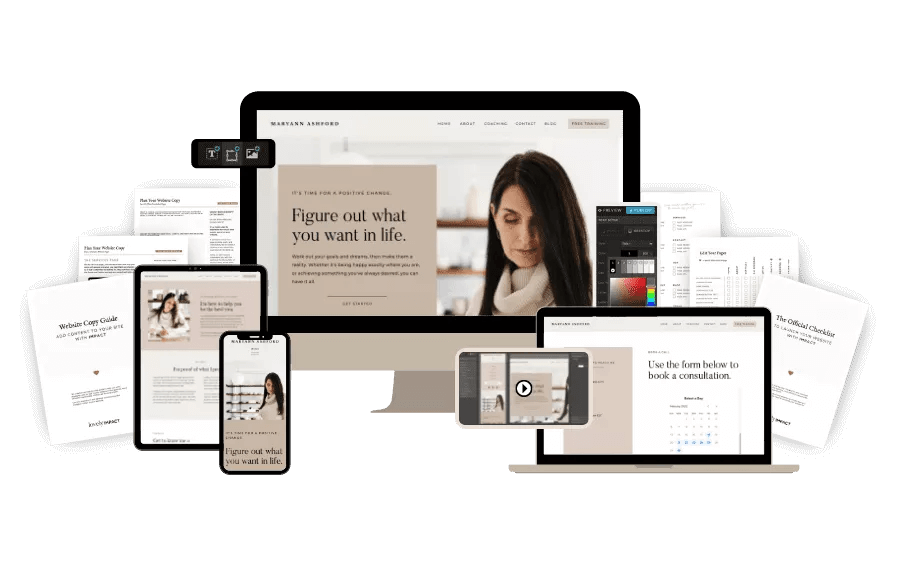

To get started with your membership site, create a subscription-based membership program that offers exclusive content, resources, and ongoing support to members. This could include access to a private community, additional coaching materials, or monthly Q&A sessions.
Offer different tiers of membership providing access to your content, tools, and community for a monthly fee.
For example, you might have a free tier for promotional materials, a mid-level tier for course access, and a high-level tier for direct access and priority.
Videos on your site should cover foundational concepts as well as tactics and applications. Organize videos into clear categories and playlists for ease of navigation like “Getting Started” and “Overcoming Obstacles.”
- Consider a multi-part training series that digs deeper into key topics.
- Consider region-locking content geared towards a member’s current progression.
- Let members network through discussion forums.
- Automate drip-sequenced video training based on join date.
- Reward loyalty through contests and giveaways.
- Send regular value emails announcing new training and community updates.
But most of all, let your personality and coaching approach shine through in everything you do. Use all these tools and resources as ways to create dynamic relationships between you and your clients.
Learn more about the best membership site platforms to help you grow and scale a membership site.
5. Live Webinars and Workshops
Live workshops and webinars offer a dynamic and interactive platform for delivering coaching content. These sessions allow for real-time coaching engagement with participants, including Q&A sessions and interactive activities.
They are excellent for addressing specific issues or conducting in-depth discussions on relevant topics. The live format builds a connection between the coach and participants, creating a more engaging and immersive learning experience.
Live webinars also showcase your expertise through virtual seminars focused on relevant niche topics ideal for your target coaching audience.
With this type of coaching, potential clients will be able to sample your coaching style and see if you’re the right fit to support them in achieving their goals.
You can host live or pre-recorded workshops and webinars on specific subjects. Use these expert-led sessions to interact with participants, answer questions, and provide valuable insights.
Focus on key topics your clients struggle with and invite viewers to submit questions to make it interactive. Keep webinars concise at 30-60 minutes.
And if you’re looking beyond Zoom to host your webinars, check out these top Zoom alternatives.
6. E-books and Guides
Digital products are among the best ways to earn passive income as a coach. Clients can purchase and download them at their convenience without direct coaching involvement.
If you create evergreen products, you’ll be able to sell them indefinitely, even when you are not actively “working”.
E-books and guides are written materials that provide in-depth information on specific topics within the coach’s expertise. They are among the best digital options to offer in your coaching business.
They serve as a valuable reference for clients looking to reinforce their learning, delve deeper into specific concepts, or access information on the go.
Publishing an e-book lets you cement your proprietary coaching framework and methodologies in an accessible, permanent medium. You can also write and sell ebooks or guides on specific topics within your niche.
You can release your book through Kindle and consider producing an audiobook version to increase reach. Use the book to share your journey and demonstrate how your approach has helped clients overcome challenges related to your niche.
- Outline the step-by-step process you guide people through
- Include teaching stories showcasing real client breakthroughs
- Promote your expertise and book through media interviews
These resources can be sold individually or bundled with other products and services. You can sell your digital products on your site, or you can use a dedicated e-commerce platform like Shopify where your clients can access and download different resources.
This is not only more convenient for you, but it’s also beneficial for your clients as they will have easy access to targeted resources designed to specifically meet their needs.
7. Assessment Tools and Resources
Online courses and e-books are two of the most popular digital products offered by experienced coaches. However, there are many more options available to you, including assessment tools and resources like the ones we discuss below.
Assessment tools and resources are diagnostic tests and evaluations designed to provide customized recommendations and action plans for your clients. They are popular for various types of coaching including career, business, fitness, and life coach online businesses.
These types of digital tools help clients gain insights into their strengths, weaknesses, and areas for improvement and may include personality assessments, skill inventories, or goal-setting frameworks.
Assessments add a structured and analytical component to coaching online. As the coach, you can analyze the results, provide personalized feedback, and create targeted action plans based on the assessments. Your clients can track their progress and improve their decision-making abilities pertaining to their development.
You can use graphic design tools like Canva, Snappa, and Visme to develop and sell assessment tools or resources that help clients identify their strengths, weaknesses, and areas for improvement.
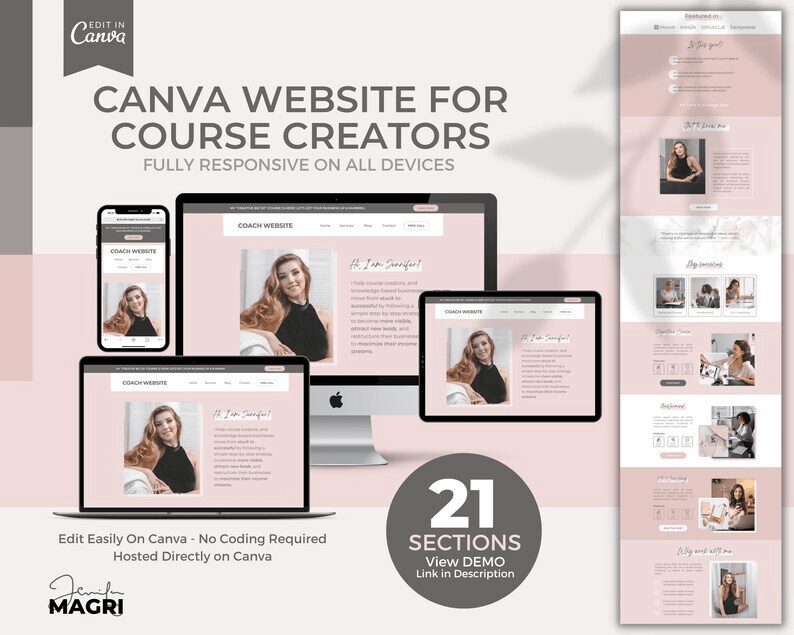

Here’s a quick look at some of the most popular assessment tools for coaches:
Journals
Journals are a vital component of many coaching programs. Coaches regularly provide journaling prompts and exercises for their clients to encourage reflection and growth.
Creating a polished journal product based on these prompts is a straightforward way for coaches to offer additional value to current and prospective clients.
Though hiring a graphic designer to produce aesthetically pleasing journal layouts requires an extra investment, the simplicity of compiling journal prompts into a tangible product makes beautiful journals highly sellable with minimal extra effort.
By packaging your expertise into a daily journal, you can extend their influence in clients’ lives while also opening up an additional revenue stream. A thoughtfully constructed journal has the power to both guide and delight those seeking direction along their personal development journey.
Workbooks
There’s very little difference between a workbook and a journal. Nonetheless, both are great examples of digital products that can provide your clients with extra value.
Workbooks based on your proprietary frameworks make coaching more accessible at a lower price point.
Though not a replacement for your one-on-one coaching services, these self-guided learning tools can lead to profound shifts for those not yet ready to fully invest in high-touch coaching.
Your existing client workbooks are a testament to the power of your philosophies and exercises. By sharing key aspects of your coaching in workbook form, you empower transformation at scale while generating an additional revenue stream.
Consider selling versions of your personalized workbooks as standalone products.
Your powerful frameworks should not be kept only to your clients. Self-published workbooks allow you to spread your coaching to those desperately seeking life change at a fraction of coaching costs.
And for those who self-guide through your workbooks, the clarity they gain may just lead them to eventually invest in your full coaching.
Checklists
Create niche checklists tailored to specific client needs and contexts. Rather than generic relationship checklists, design versions for early-stage bonds vs long-term ones.
For example, new couples need to watch for different green flags than life partners do. An executive may prioritize other areas of self-care than a busy parent.
Target your checklists more precisely to provide the most value for each client’s unique situation and goals.
Hyper-personalized materials demonstrate your deep understanding of their world and build trust in your guidance. Checklists that speak directly to your client’s current challenges will be cherished as helpful tools for clarity and direction.
Templates
Templates offer new clients a tangible starting point when they lack direction. Especially in virtual coaching, templates visually map ideal growth paths.
Blend other engaging elements into your templates like checklists, drawing spaces, book recommendations, etc. This mix grounds overwhelming clients while sparking self-discovery through interactive activities.
Templates make early coaching sessions productive and client-led by providing stems for them to fill based on their unique goals and needs. Allow your templates to kickstart clients’ excitement about the transformation to come.
8. Retreats and Intensives
For an immersive and truly transformative experience, host in-person or virtual multi-day retreats centered around goal achievement through your coaching.
These can help attendees dedicate focused time for self-improvement free of regular distractions in a relaxing environment. This fosters intensive coaching over a shorter period and helps build a deeper connection with clients.
Retreats often include a combination of coaching sessions, workshops, and leisure activities to create a holistic and transformative experience. The intensive format allows clients to make significant progress over a condensed period while building strong connections with the coach and fellow participants.
Build each day with coaching activities like breakout sessions, coaching circles, goal-setting labs, and recreational activities reinforcing learnings.
Arrange retreats for both general groups and specialized niches you coach like executives, families, women’s empowerment, and more. Size events appropriately to maintain a high-touch experience.
9. Corporate Coaching Programs
Corporate coaching may involve team workshops, executive coaching, or organizational development initiatives.
This service is particularly beneficial for companies looking to invest in the professional growth and effectiveness of their employees.
The image below shows some examples of executive coaching services:
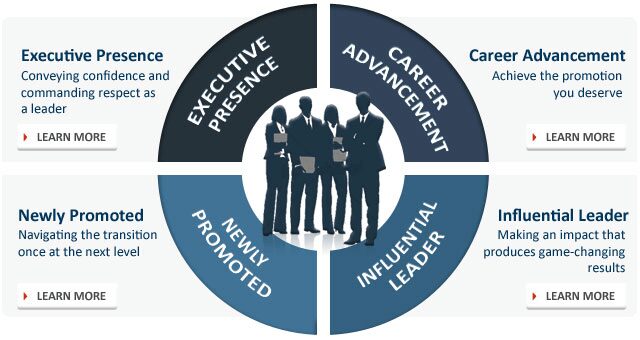

Business coaches collaborate with key stakeholders to understand organizational goals and tailor coaching interventions accordingly.
Providing coaching services for organizations and teams represents a sizable business opportunity to significantly expand your impact.
You can offer corporate programs customized to help businesses and organizations in the following ways:
- Develop leadership skills
- Enhance team performance
- Improve time management
- Reduce turnover
- Boost employee satisfaction
These premium one-on-one and group coaching packages from executive coaches enable companies to invest in top talent and allow them to boost talent retention.
Design sessions focused on areas like conflict resolution, performance optimization, presenting with confidence, and managing stress.
Tailor content and approach to company culture and objectives.
The key elements covered include highlighting the benefits of business coaching, explaining how services can be customized for business needs, emphasizing positive outcomes for career development and company growth, and conveying how your proven leadership coaching approach translates powerfully into professional settings through both 1-on-1 and group programs.
A needs assessment helps determine appropriate outcomes and metrics. Extend services through manager and employee workshops centered around mentorship, feedback techniques, and leadership communication informed by proven coaching methodology.
Whether serving executives, managers, or entire departments, corporate coaching strengthens workplaces.
10. Coaching Packages
Bundle your services into packages that cater to different client needs and budgets. Coaching packages involve bundling services into structured offerings to meet different client needs and budgets.
For example, a coach might offer a monthly coaching package, a 3-month intensive program, or a one-time strategy session.
Developing appealing coaching bundles enables you to offer your audiences coordinated solutions at an attractive value to help them maximize progress.
Bundles speak to common client challenges by combining complementary services into cohesive experiences. For example, pair an initial assessment and personalized roadmap with targeted 1-on-1 sessions and supporting video training.
Or offer a VIP pass granting access to your entire online course and webinar coaching library for an exclusive price.
Packages provide clarity on the duration and scope of your coaching service, making it easier for clients to choose a service that aligns with their goals. This approach allows coaches to offer a range of options and cater to clients with varying preferences and requirements.
Kickstart bundles to get members thriving as they begin their self-improvement journeys. Promising transformative or lasting change, bundles keep clients actively engaged over time which deepens the coaching relationship and impact – not to mention that it simplifies things when selling coaching.
11. Mastermind Groups
Another way to earn income in your coaching business is to facilitate mastermind groups where like-minded individuals and business professionals come together to share experiences, and insights, and support each other.
These groups can meet regularly to discuss challenges and successes so that members can benefit from collective wisdom.
Mastermind groups take coaching collaboration to the next level. These intimate peer advisory teams enjoy many benefits. For example, they:
- Gain alternative and diverse perspectives
- Foster long-term relationships
- Share knowledge and contacts
- Hold one another accountable to progress between sessions.
Mastermind members are invested in each others’ success and well-being. As a facilitator, guide personalized goal setting, structured networking, strategic planning, and problem-solving discussions.
Format meetings around member updates, timed Q&A, cooperative brainstorming, and coaching agenda items – concluding with the next action steps.
Size groups between 6-8 participants at comparable development levels. Outcomes include amplified motivation, objective feedback, strengthened confidence, improved results, and accelerated growth through layered group wisdom.
Mastermind facilitation demonstrates your coaching abilities while regular meetings cultivate community and firmly position you as an influential expert leader in your field. Graduates make excellent brand evangelists.
12. Merchandise
Sell useful merchandise like t-shirts, mugs, and calendars to fans. This allows further connection. Offering custom-branded merchandise makes for meaningful keepsakes for devoted coaching clients who want to proudly demonstrate their commitment and progress.
Premium quality journals, planners, water bottles, t-shirts, and other useful gear engraved with motivational quotes keep your coaching top of mind.
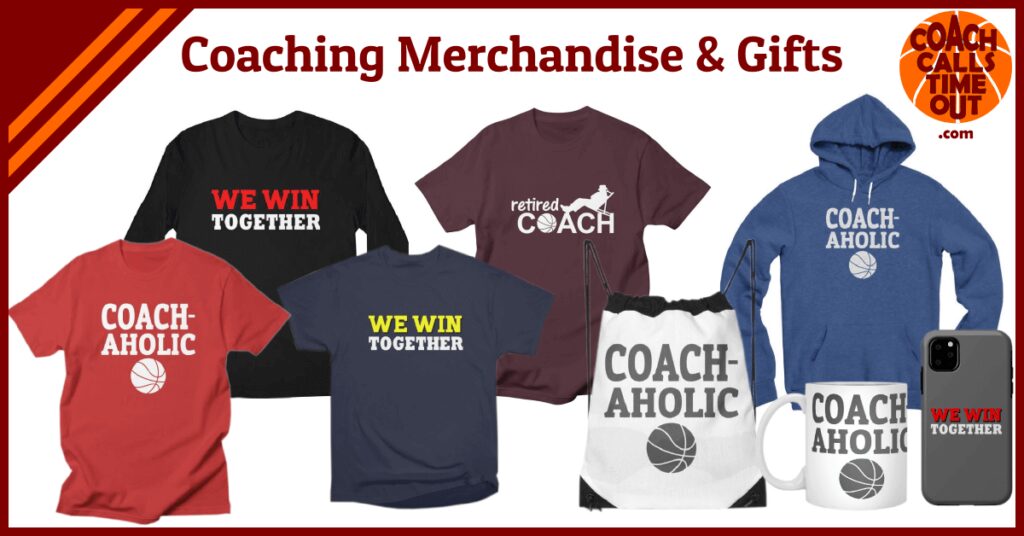

Announce limited edition and seasonal offerings to incentivize purchase. Send clients who recently completed programs a special congratulatory package. The extras make excellent gifts too.
Bonus Options
The products and services listed above are all you need to succeed in the online coaching space. However, there are additional monetization methods that you can use in your online coaching program.
The reason they’re not included in the list above is that you don’t fully own the audience. This means that by using this method, you’ll be helping other businesses build their following instead of using that time and effort to build your own.
In the case of using social media platforms like Facebook, Instagram, or TikTok for coaches, you stand to lose much of your revenue if the algorithm changes the way it works.
There’s no denying that it’s best to focus on building your own audience if you want to create a sustainable coaching business.
With that said affiliate products and services are a great option for coaches who are just getting started and have yet to create their own products to sell.
You’ll be able to start earning right away, even with a small audience. This way, you’ll have money coming in while you work to publicize your brand and build a following.
Affiliate Products or Services
Becoming an affiliate allows you to earn passive income by promoting relevant products aligned with your niche. You receive a percentage of sales generated from your specialized promotional links.
Identify services, software, courses, or products that serve your ideal client avatar. You can vet affiliate programs through Google by adding “affiliate” to the product name. Monetize your niche authority by providing trustworthy recommendations you genuinely believe in.
Curate only top resources that can accelerate client success while diversifying your income streams. The right strategic partnerships keep your business sustainable while allowing you to focus on your core coaching offerings.
Sponsorships
Sponsorships are yet another way to monetize your knowledge. Monetize your online coaching platform through sponsored integrations aligned with your audience’s interests.
Pitch relevant brands seeking access to your engaged community with podcast reads YouTube sponsor spots, or newsletter promotions.
Especially lucrative options include weaving sponsors into your online course, summit, or live event.
Carefully vet sponsors who ethically serve your people to maintain authenticity and trust while benefiting from lucrative partnership deals only available to influencers within your reach. Prioritize integrity even in paid collaborations.
Summary
As this guide has shown, there are many options when it comes to diversifying your coaching business products and services. Having different offers allows you to instantly boost the value of your coaching package.
Whether you’re dealing with small businesses, large corporations, freelancers, or entrepreneurs, you’ll be able to build sustainable coaching income through layered revenue streams. But, there’s no need to try everything all at once. Instead, you can begin by identifying one or two aligned monetization methods focused on your strengths and audience needs.
Choose options providing passive earnings while actively coaching. Slowly diversify into additional products, affiliations, or platforms as demand dictates.
With multiple income channels fueled by your core offerings, you create stability while scaling impact. This way, you’ll let your business grow naturally from a solid foundation of excellence rather than overextending yourself across too many options too fast.
FAQ:
What Are Coaching Products?
Coaching products deliver tangible self-improvement through physical or digital mediums. Ranging from books to apps and courses, they empower goal achievement and life optimization. Well-designed coaching tools provide structured guidance for personal growth outside direct coaching relationships. Their appeal lies in convenient accessibility paired with the wisdom of coaching methodologies distilled into scalable products.
What’s the difference between coaching products and coaching services?
Coaching services involve direct interaction over time with an experienced coach who personally offers guidance to the client to help them meet individual development goals. Coaching products, on the other hand, provide structured self-directed learning tools that distill key coaching principles and frameworks that clients can engage with at their own pace independent of the coach. Coaching products serve as supplemental tools that may come from a coaching practice or exist entirely separately.
How To Build Coaching Products?
First, analyze your target audience to identify unmet needs suited to coaching products. Match products tightly to what varying groups wish to improve about their lives through self-guidance. Cover a spectrum of mediums and frameworks while maintaining brand cohesion. Regardless of the type, ensure quality through clear instructions and appealing design. Invest in high-grade materials conveying excellence. Well-made, helpful products that improve lives will sell themselves through customer recommendations.
What topics can you cover in your online coaching products?
Identify common obstacles faced by your target clients that coaching techniques can help overcome. Assess their typical obstacles, pain points, and recurring bad habits impeding progress. Lean into your niche expertise to pinpoint the root causes of these issues, then tightly focus educational products on remedying client struggles. For example, distill learnings into a condensed e-course, action guide, or video series directly addressing how to break through their biggest and most frequent hurdles.
How do you package a coaching offer?
Package your coaching offer by designing a sequenced program with flexible customization. Typical parameters are 10 sixty-minute sessions over three months, with optional between-session support. Logically order the steps for maximum impact as clients progress. Be prepared to tailor the path based on evolving client needs while maintaining a coherent flow.
How To Create High-End Coaching Products?
Craft high-end coaching products by cultivating an exceptional customer experience. Provide white-glove customer service demonstrating your investment in their success. Share VIP resources and bonuses that make clients feel valued. Package your offering in a polished, professional manner with easy-to-use instructions and tracking methods. Design an intuitive user experience to make engaging with your materials a pleasure. Most importantly, keep the end user’s evolving needs and feedback central to your process through regular check-ins and improvements.
Table of Contents



